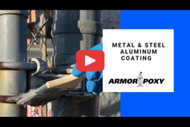When you walk across the bridge, lean on a railing or drive beneath a towering steel structure, most of us rarely stop to think about the invisible safeguards that keep the pieces of the bridge or railing strong. In the construction or engineering field, metals are the critical element that make or destroy the infrastructure, and protecting this infrastructure comes along with metal coatings.
These specialised protective layers do far more than prevent rust. They play the vital role in ensuring the public are safe from accidents and extend the lifespan of structures every day.
Here we will explore the different dimensions of how the metal coating is involved in public safety and where it is used.
Threat of Corrosion
Steel is the backbone of the infrastructure. Bridges, guardrails, pipelines and high-rise reinforcements all depend on its strength. But steel is also naturally weak when it comes to corrosion. Left unprotected, exposed to water, oxygen, salt and pollution, it can be eaten away at a steady speed. Corrosion isn’t just natural or cosmetic, but when it occurs, it compromises structural integrity. In fact, studies show that corrosion-related damage is a leading factor in infrastructure failures. A weakened bridge beam or corroded railing or rusted support column can turn into a hazard for the public. This is where coatings step in, forming a durable shield between steel and harsh elements that threaten it.
Keeping the Bridges Strong and Safe
Bridges are some of the most corrosion-prone structures in the world. Constant exposure to rain, road salts, temperature and vehicle exhaust accelerates wear and tear. A single crack or rust spot, if unchecked, can spread the rust and threaten the safety of thousands of commuters. Protective coatings prevent moisture and salts from penetrating steel surfaces. Dramatically, the metal coating can slow down the corrosion process. In some cases, advanced coating systems add decades of life to the metal infrastructure, like bridges. For the public, this means fewer closures, fewer risks and confidence in the safety of the structure.
Everyday Safety
While bridges grab the headline for massive casualty, the smaller details of infrastructure matter just as much. Think about the railing you grip on a pedestrian overpass or the guardrail that keeps vehicles safe on a winding highway. These are also the front line defences for the public safety. If these elements rust through, accidents become more likely. Whether it’s a weekend railing failing or a corroded guardrail unable to absorb impact during a crash. Coatings protect these everyday safety features from deterioration, ensuring they can perform as intended when lives are on the line.
Reducing Environmental Hazards
Beyond preventing accidents, coatings also play an important role in protecting the environment. When steel corrodes, flakes of rust and metal can leach into soil and waterways, creating contamination risks. Protective coatings lock down these surfaces, reducing runoff and keeping surrounding ecosystems cleaner. Moreover, through extending the lifespan of steel coating, it can reduce the frequent replacements, which in turn lowers the demand of new steel production.
Long-Term Public Investment
At first glance, coatings may seem like a technical detail in the construction process. But the truth is, they are on people-first investment. Every dollar spent on quality protective coatings helps prevent accidents, reduces maintenance disruptions and safeguards communities from hazards and accidents.
Hidden Protector – Metal Coating Solution
Metal coatings may not be visible, but their impact is undeniable. They are hidden protectors of our infrastructure, shielding steel from corrosion and keeping communities safe and sound. From bridges to guardrails, from skyscrapers to pipelines, coatings silently uphold the reliability of the systems we use every day.
The next time you walk across a bridge or rest your hands on any railing, remember, it’s not just steel holding you up – it’s the unseen layer of protection ensuring that safety remains a constant in your daily life.

